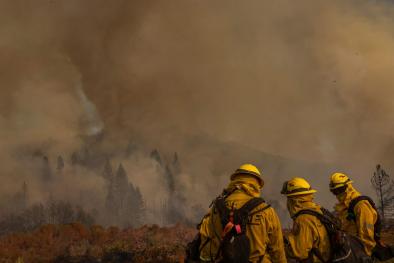Science Source
Anthropogenic Influence on Long Return Period Daily Temperature Extremes at Regional Scales
- Compares observed 1961–2000 annual extreme temperatures, namely annual maximum daily maximum (TXx) and minimum (TNx) temperatures and annual minimum daily maximum (TXn) and minimum (TNn) temperatures with those from climate simulations of multiple model ensembles with historical anthropogenic (ANT) forcing and with combined anthropogenic and natural external forcings (ALL) at both global and regional scales
- Results show that the influence of anthropogenic forcing has had a detectable influence on extreme temperatures that have impacts on human society and natural systems at global and regional scales
- Finds that external influence is estimated to have resulted in large changes in the likelihood of extreme annual maximum and minimum daily temperatures
- Finds that, globally, waiting times globally for extreme annual minimum daily minimum and daily maximum temperature events that were expected to recur once every 20 yr in the 1960s are now estimated to exceed 35 and 30 yr, respectively
- Finds in contrast, that the waiting times for circa 1960s 20-yr extremes of annual maximum daily minimum and daily maximum temperatures are estimated to have decreased to fewer than 10 and 15 yr, respectively
Related Content
Headline

Feb 7, 2024 | Climate Nexus Hot News
Heat And Smoke Are Worse Together Than Apart
Science Source
| Science Advances
Unprecedented climate events: Historical changes, aspirational targets, and national commitments
Noah S. Diffenbaugh, Deepti Singh, and Justin S. Mankin
Science Source
| American Meteorological Society
Sixfold Increase in Historical Northern Hemisphere Concurrent Large Heatwaves Driven by Warming and Changing Atmospheric Circulations
Cassandra D. W. Rogers , Kai Kornhuber , Sarah E. Perkins-Kirkpatrick et al
Science Source
| American Meteorological Society
Diverse Characteristics of U.S. Summer Heat Waves
Bradfield Lyon and Anthony G. Barnston


